Best of... Pargasite Root Name Group
(A)(Ca2){Z2+4Z3+)(Al2Si6O22)(OH,F,Cl)2
Introduction
Pargasite is one of the earliest amphiboles that was described and that are still a valid mineral. It was rudimentary described by von Steinheil in 1814 and more thoroughly by Nordenskiöld (1821). He included both chemistry, optical and physical properties as well as detailed crystallographic measurements, compared to most other contemporary first descriptions of minerals, his work was remarkable.
Following the current amphibole nomenclature scheme (Hawthorne et al.2012), pargasite is now an amphibole root name as well as a mineral species. The pargasite root-name group currently (2020) contains the following minerals:
chromio-pargasite with 2 localities listed in mindat (2020),
ferro-pargasite with 60 localities listed in mindat (2020),
fluoro-pargasite with 9 localities listed in mindat (2020),
mangani-pargasite with 1 locality listed in mindat (20209
pargasite with 343 localities listed in mindat (2020),
potassic-chloro-pargasite with 1 locality listed in mindat (2020),
potassic-ferro-pargasite with 5 localities listed in mindat (2020),
potassic-fluoro-pargasite with 1 locality listed in mindat (2020),
potassic-pargasite with 9 localities listed in mindat (2020), and
vanadio-pargasite with 1 locality listed in mindat (2020).
In addition, amphiboles with chemical compositions corresponding to ferro-chloro-pargasite and oxo-pargasite are listed from 1 locality each in mindat (2020) These minerals is not approved due to inadequate description, but are classified as "named" amphiboles.
The mineral pargasite is more common than indicated in mindat, as it is one of the more common amphiboles in metamorphic rocks (Schumacher, 2007). The majority of "hornblende" specimens is probably either magnesio-hornblende and pargasite.
Pargasite root name amphiboles form continuous series towards several other amphiboles and are frequently found together with one or more other amphibole species. In many marbles, the amphibole can be intermediate between pargasite and edenite, in amphibolites, the amphibole is often in the actinolite-magnesio-hornblende-pargasite series. In megacrysts in volcanic rocks, the amphibole is often intermediate between hastingsite, pargasite and kaersutite. In eclogites and other high-grade mafic rocks, the amphibole may be intermediate between pargasite and Na-Ca amphiboles.
Pargasite can be found in a wide range of rock types, both igneous and metamorphic. The largest, well-formed crystals of pargasite are known from calc-silicate rocks and marbles, and this type of occurrence is well represented in this article. The intense, sometimes gemmy, pargasite from the ruby bearing marbles of Pakistan, Burma and Vietnam are about as attractive as amphibole specimens get, particularly colorful are the combo specimens from Vietnam with grass green pargasite and red spinel perched in white marble.
Afghanistan
Sar-e-Sang River, Sar-e-Sang, Kuran wa Munjan District, Badakhshan, Afghanistan
Pargasite from the Sar-e-Sang deposits has been confirmed from the locality Moore and Woodside (2014) call the “Sar-e-Sang River occurrence”, which is one of the few mineral localities in this area outside the lapis mines that has a known geographical location. Brown pargasite up to 5 cm occurs together with marialite and green and blue haüyne in a skarn marble near the join between the Sar-e-Sang and the Kokcha River. The pargasite can be found as embedded crystals in marble, sometimes in (partly) transparent crystals.
The geology and origin of these unique mineral occurrences are not fully understood, but Faryad (1999,2002) and Grew(1988) describe a great variety of metamorphic rock compositions, derived from evaporite and carbonate–pelite mix interbedded with meta-basites.
It appears that these rocks have seen several metamorphic events, with peak conditions near the amphibolite–eclogite facies transition.
Czech Republic
Lukov outcrop, Lukov, Teplice District, Ústí nad Labem Region, Czech Republic
Amphiboles intermediate between pargasite and kaersutite is a rock forming mineral in alkaline dykes in this area. Ti-rich pargasite and kaersutite is found in more than 70% of the more than 1000 alkaline dykes radially arranged to the main volcanic centre of the České Středohoří Mts, often as macroscopic (>2 mm) phenocrysts, Some localities with alkaline basaltic rocks, like Lukov u Bíliny, well-formed, prismatic amphibole crystals up to 15 cm can be found, either embedded in, or weathered free from the basaltic groundmass.
J. Ulrych (Pers. Com 2012) has provided analytical data from Lukov and several other localities related to the České Středohoří Mts. volcanic center. The Ti content ranges from 4.24-5.29wt% placing these amphiboles at or near the titanian pargasite-kaersutite borderline of 0.5 (atoms per formula unit) apfu Ti. More recent data from Ulrych et al. (2018) show that amphiboles contain from ca 0.3 apfu to 0.7 apfu Ti. The larger crystals rarely contain enough Ti to qualify as kaersutite, and the majority of large crystals are pargasite or hastingsite root name amphiboles.
It should also be noted that these amphiboles are highly oxidized, and it is possible that both oxo-pargasite and oxo-hastingsites may be identified in these rocks.
Finland
Pargas, Southwest Finland, Finland
Limberg quarry, Pargas, Southwest Finland, Finland
Ersby, Pargas, Southwest Finland, Finland
Simonby, Pargas, Southwest Finland, Finland
Pargas is one of the classical mineral localities in Europe. Marble has been quarried here since the 12th century and minerals from the quarries sparked the interest amongst the early mineralogists in the 18th and 19th century.
Pargasite was described in 1814 by von Steinheil, analyzed by Gmelin (1816) and thoroughly described by Nordenskiold in 1821. Compared to contemporary descriptions of new minerals, Nordenskiold’s work is outstanding.
Pargasite from Pargas was popular amongst collectors and museums throughout the 19th century, and most museums acquiring minerals in this period will have one or more samples. These old samples still have scientific value, as both potassic-pargasite and fluoro-cannilloite has been described for the first time by re-analyzing old “pargasite” samples.
Several other amphiboles have also been identified from the Pargas “pargasite”. It is apparent that both Na content, K/Na ratio, Al content and F/(OH) ratio are variable, and several other amphiboles in with edenite, pargasite and possibly magnsio-hornblende root-name are identified from these “pargasites”.
Pargasite is considered a common mineral in the Pargas marbles. It occurs as both single crystals embedded in the marble, and larger groups near or at the contacts between the marble and surrounding rocks. The largest crystals are tabular and can be up to 30- 40 cm along the longest axis. The crystals embedded in the marble is smaller, most frequently around 1 cm, and has a characteristic “melted” look with rounded edges of the crystals, but even these crystals may reach sizes up to 15 cm. The more transparent the calcite gets, the larger and better developed are the pargasite crystals; and even the largest crystals are well-formed. The color varies between green, to greenish black and pitch-black. Laitakari (1921) provides illustrations of several different crystal forms of the pargasite.
The marbles originate from a 1,9 billion year old Sveco-Fennian sequence of sediments and supracrustal (formed on surface) volcanic rocks, which is later metamorphosed to predominantly gneisses, micaschists, amphibolites as well as marble layers and lenses. A characteristic feature of the Pargas ( Parainen) geology is a 15 km long amphibolite ring structure. The marbles follow the inside of this ring as layers of variable thickness, with intermediate layers of quartz/feldspar gneiss. The marble is white, coarse-crystalline and dolomite-free. Pargasite and other minerals are both embedded in the marble, near the contact with the surrounding rocks, or alongside crossing pegmatite veins. There have been many quarries operating in the marble. Laitakari (1921) lists 7 areas where marble production took place. The Limberg quarry is the only quarry in operation today (2012), and pargasite can be still be found.
Japan
Higashi-Akaishi dunite, Higashi-Akaishi Ultrahigh-Pressure Peridotite Complex, Ehime Prefecture, Japan
Intense green chromio-pergasite is found associated with chromite ore in an ultramafic rock, which has undergone metamorphism to eclogite facies and subsequently to epidote-amphibole facies. The rocks are predominantly dunite showing varying degrees of serpentinization. Scattered chromite deposits are common in the dunite. Hydrothermal alteration during serpentinization has given several chrome bearing silicates like kämmerite, chrome bearing light green diopside and minor uvarovite. Chromio-pargasite occurs associated with these minerals, and in particular with kämmerite and chromite.
Chromio-pargasite occurs as prismatic crystals up to 1,5 cm long and 5mm wide. They have a characteristic intense green color which distinguishes chromio-pargasite from other minerals from the Higashi-Akaishi dunite. Chromio-pargasite is also the only(!) amphibole at the localities.
Chromio-pargasite share the color with the chrome-bearing pargasites from ruby bearing marbles in Pakistan, Myanmar and Vietnam. These pargasites only contain suffient chromium to give color, and not at all sufficient to give chromio-pargasite.
Myanmar
Pein-Pyit (Painpyit; Pyan Pyit), Mogok Township, Pyin-Oo-Lwin District, Mandalay Region, Myanmar
Mogok Township, Pyin-Oo-Lwin District, Mandalay Region, Myanmar
Pargasite occurs in the ruby bearing marbles in Mogok. The marbles formed from Proterozoic sediments (>750 MYa) metamorphosed by collision with a Gondwana fragment (Burma Block) in Cretaceous time (~150 MYa) and later with the Indian block in Eocene time (~50 MYa), and with metamorphism to ~20 Ma and intrusions to ~15 Ma.
The marbles in Mogok share several traits with the ruby and spinel marbles of Afghanistan, Pakistan and Vietnam, including the presence of nice pargasite crystals. Giuliani et al. (2014) provides an overview of the geology and genesis of these occurrences.
The pargasite and fluoro-pargasite from Mogok is generally rarer and paler green than the ones found in Pakistan and Vietnam. It does however seem that a higher fraction of the Mogok amphiboles are facet grade material than from other localities. It is still a very rare gemstone.
Pargasite can be found as up to 6 cm long crystals embedded in marble. The composition is borderline (fluoro-)edenite to pargasite, and only EMPA analysis also measuring Fluor content can be used to differentiate with these amphibole species.
Pakistan
Shigar Valley, Shigar District, Gilgit-Baltistan, Pakistan
<Basha Valley, Shigar District, Gilgit-Baltistan, Pakistan
A limited number of shiny black amphiboles up to 10 cm became available on the global mineral market via Herb Obodda in 2007. They have been labelled ferro-pargasite, but no details on analytical method are public knowledge. A small lot of similar looking amphiboles also surfaced around 2000 as ferro-actinolite
The exact origin is not known, which is often the case for small finds in the rugged terrain in Northern Pakistan. The geological conditions responsible for forming these large and sharp amphiboles are therefore also not known.
Haramosh Mts., Roundu District, Gilgit-Baltistan, Pakistan
Aliabad marbles, Aliabad, Nagar District, Gilgit-Baltistan, Pakistan
Ganish marbles, Nagar District, Gilgit-Baltistan, Pakistan
The intense green pargasites from Northern Pakistan are amongst the most desirable amphiboles for collectors and the best specimens can reach into the 4-digit USD price range on the retail marked. The pargasite is found associated with the ruby bearing marbles in the Baltit metasedimentary group, and pargasites can be found in several outcrops in this rock.
This group is contained in the Karakorum metamorphic belt, and pargasite ( and ruby) localities belonging to this group surfaces in a more than 100km long belt from Afghanistan through Pakistan to India. The Haramosh mountains lies just south of the Hunza valley, but it is a bit misleading to attribute pargasite to the Haramosh monitain as these mountains lies south of the fault zone, the main Karakorum thrust, and the intense green pargasites are only found in the Bilbit group marbles north of the main Karakorum thrust.
These pargasites are sometimes referred to as “Hunza emeralds” due to their beautiful green color. This is obviously misleading, and they might be confused with real emeralds that are found in a talc carbonate rock in the Haramosh mountains. Both emerald and green pargasite may be offered in the same mineral markets as emeralds.
The minerals in the Hunza Valley were discovered in the 1970-ties during construction of the Karthoum Highway. The minerals ( in particular ruby, but also pargasite and others) proved a valuable source of hard cash, are extracted from several localities near Aliabad, which is the local mineral market place. In this context, “near” is a relative term as the area is very rugged and many of the locations are rather remote and difficult to access, and the exact origin for many finds will probably never be known.
The pargasite normally occurs as attractive grass green irregular crystals in a white marble host rock, well developed, and/or transparent crystals are rare but can be found. It seems that the crystals do not (or very rarely) exceed 5cm length in the longest direction. Garnier et.al. (2014) has analyzed this pargasite and found a small ( 0,11-0,34 %wt) Cr2O3 content, which should be responsible for the attractive color.
The geologic history in the area is complex and is discussed in detail in several publications. The pargasite bearing marbles are found as concordant intercalations within sillimanite- and garnet-bearing gneisses and mica schists crosscut by leuco-granitic aplites and granite pegmatites. It is believed that the chemical elements required to form pargasite and the other minerals has been contained within the original carbonate sediments as aluminous clays and organic matter, and that the pargasites has been formed by regional metamorphosis (amphibolite facies) in the Indo-Asian plate collision.
Russia
Slyudyanka, Lake Baikal area, Irkutsk Oblast, Russia
The crystalline rocks of the Slyudyanka group are Upper Archaean carbonate and quartz/diopside rocks that has undergone a series of metamorphic and metasomatic events. A wide range of minerals has been found in the mines and quarries exploiting industrial minerals (phlogopite, marble, lazurite, wollastonite) since the 18th century. The skarns have been extensively studied by Russian scientists and both contact skarns and vein skarns are known.
Well-formed and terminated pargasites are known in crystals up to 10х8х3 сm: (Pavel M. Kartashov analytical data, 2011)
Spain
Manuel-Mercedes open pit, Cala Mines, Cala, Huelva, Andalusia, Spain
Industrial mining in the Cala mine started in 1853 on copper minerals. With mining efforts turning towards magnetite iron ore around the turn of the century. The mining operations ceased in 2010. Magnetite ore is found in a skarn formed in the contact between a granodiorite to biotitic monzogranite and limestones and shales.
Carriedo et al. (2006) distinguishes between three mineralization events:
1) magmatic intrusion that it gives rise to contact metamorphism
2) Interaction between high temperature hydrothermal fluids related to the intrusion, forming high temperature pyroxene, garnet and magnetite skarns
3) Low temperature hydrothermal interaction with meteoric water forming low temperature skarns with w, with amphibole, epidote, albite and calcite.
It appears to be two generations of amphiboles at this locality, an initial ferro-pargasite phase, with later (ferro-)actionolite as an interstitial or replacement phase. The ferro-pargasite is listed by Velasco et al. (1981) and tentatively confirmed in 2012 by XRD on foro-minerales.com. As stated by the analyst, XRD is not a fully adequate analytical method for amphiboles but gives a good indication. The material may also be fully or in part a pargasite and/or hornblende or hastingsite root name amphibole.
USA
Franklin Quarry (Braens Quarry; Moses Bigelow Quarry; Farber Quarry), Franklin Marble, Franklin, Sussex County, New Jersey, USA
Edison-Bodnar Quarries, Rudeville, Hardyston Township, Sussex County, New Jersey, USA
Rhein Property, Amity, Town of Warwick, Orange County, New York, USA
The Franklin marble was originally a marine carbonate that has been metamorphosed to high amphibolite/granulite facies. It belongs to the Grenville terrain. The Franklin marble is exposed in northern New Jersey and southern New York, and contains numerous horizons, often seen as isolated, elongated lenses but sometimes distributed in continuous trends. It forms a 335-457ft thick layer of light grey, foliated, medium to coarse grained predominantly calcite marble. Associated with the Franklin marble is numerous small magnetite ores and the Franklin/Sterling Hill orebody, which is a unique locality for minerals. Near the contact between the marble and the surrounding rocks, pods and layers of clinopyroxene-garnet skarn, hornblende skarn, and clinopyroxene-rich rock. These skarns have produced outstanding specimens of different minerals from many localities for almost 200 years. Even today new localities can be found, which the Rhein property is a good example. This locality was discovered in 2010 and has since then produced specimens rivalling the classic localities from the last century.
The amphiboles in the Franklin marbles are generally belonging to the tremolite/actinolite series, hornblende, edenite, pargasite and hastingsite root name groups. These amphiboles are not easily distinguishable, and as stated by Palache (1935): “it seems likely that the several varieties (of amphibole) cannot be certainly distinguished except by analysis (of the individual crystal).” The assignment of a name to an amphibole from the Franklin marble based on color and association is commonly done but is an inadequate and often faulty practice.
The amphiboles are generally rich in Fluor, and several Fluor dominant species are first described from these localities. Kearns et al. (1980) did a systematic investigation on the F content in the amphiboles and found that the average F content for pargasite 0.88 atoms pr. formula unit (apfu) with 1,14 apfu F as a maximum value. Consequently, fluoro-pargasite should be almost as common as pargasite.
Following Dunn (1995), it appears that pargasite is probably the most common amphibole in the Franklin marble, and many analyzed “edenites” have proven to be pargasites. An example is included in one of the photos here.
Pargasite occurs in amphibole skarns in a variety of colors, sizes and crystal shapes. The color ranges from semi-transparent light green to almost black. Well-formed individual crystals may reach 25 cm or more. Both Palache (1935) and Beck (1842) provides reports of very large crystals. They also provide a number of crystal drawings showing the variety of crystal forms shown by the pargasites of the Franklin marble.
Cascade Slide, Cascade Mountain, Keene Township, Essex County, New York, USA
The ferro-pargasite has been found in the Cascade Slide on the north slope of Mount Cascade in the Adirondack mountains. Ferro-pargasite is found in marble and calc-silicate xenoliths in an anorthosite massif. The anorthosite formed during the Grenville orogeny, and it is believed that the metasedimentary xenoliths formed near the top of the anorthosite intrusion, and is relatively common near mountain tops in the area.
The largest marble xenolith in the Cascade Slide is 200x30m and has an interesting mineralogy. The ferro-pargasites can be quite large (~ 10cm) well developed flattened crystals.
Vietnam
Lục Yên District, Yên Bái Province, Vietnam
The Luc Yen deposits is currently (2020) the main provider of high quality pargasite crystals. The pargasite occurs in the ruby and spinel bearing marbles in the Luc Yen area and provides an additional source of income for the miners in the district.
All of Luc Yen’s gem deposits are located in the Lo Gam formation. The structure of this unit is the result of deformation on preexisting Indosinian structure (240–245 Ma) by the Himalayan orogenesis (from 35 to 17 Ma). The Lo Gam formation consists of a sedimentary series metamorphosed (amphibolite facies) into marble, gneiss, calc-silicates, mica schist, and amphibolite. These metamorphic rocks are sometimes intruded by granitic and pegmatitic dykes. The marbles, which hosts the pargasite crystals are mainly calcitic and interlayered with Al-, V-, and Cr-rich amphibolites. The marbles can be more than 500m thick.
The marble paragenesis consists of calcite, dolomite, spinel, corundum forsterite, clinohumite, apatite, margarite, pargasite, chlorite, ± graphite, ± pyrite, ± pyrrhotite. It is believed that embedded clay minerals in the original carbonate sediments have provided the required Al to form Al-rich minerals like corundum, spinel and pargasite. Pargasite are most frequently associated with spinel and forsterite, and it is often found embedded in marble near bands of forsterite and spinel.
Minerals and gem rough are mined both from primary and secondary deposits, but the vast majority of pargasite specimens originates from the primary deposits. The deposits are normally worked with hand-tools by local farmers, securing some extra income. Pargasite specimens may often have some of the marble etched away, ore carefully crafted/trimmed away to improve the display quality of the specimens.
Pargasite have been found as individual crystals approaching 10 cm, and some of the smaller crystals are extremely well formed and sometimes partly transparent. It appears that pargasite, fortunately, has a higher value as mineral specimens than gems.
The Luc Yen deposits was discovered in 1983, and mining started in 1987.The pargasites was first brought to market in China, and was initially believed to be of Chinese origin, and some of the first specimens brought to Europe and the USA may still be labeled with a chinese locality.
The green pargasites from Luc Yen have been claimed to be fluor-cannilloite, but there is no analytical evidence whatsoever to support this claim. See also Mindat mistakes and errors forum.
Related and referenced articles
Mindat article | ||||||||||||||||
|
References
de Almodóvar Sel, G. R. (2008). Minas de Cala: el resultado de la interacción entre fluidos hidrotermales y rocas carbonatadas. In Geología de Huelva: lugares de interés geológico (pp. 96-97). Universidad de Huelva.
Beck, L. C. (1842). Mineralogy of New-York: Comprising Detailed Descriptions of the Minerals Hitherto Found in the State of New-York, and Notices of Their Uses in the Arts and Agriculture. W. & A. White & J. Visscher.
Carriedo, J., Tornos, F., Velasco, F., & Terrón, A. (2006). Mineralizaciones de magnetita asociadas a skarns y bandas de cizalla: La mina de Cala (Huelva). Geogaceta, 40, 235-238.
Chauviré, B., Rondeau, B., Fritsch, E., Ressigeac, P., & Devidal, J. L. (2015). BLUE SPINEL FROM THE LUC YEN DISTRICT OF VIETNAM. Gems & Gemology, 51(1).
Clanin, J (2008): Gemstone and mineral mining in Pakistan’s mountains, InColor Magazin
Dunn, P. J. (1995). Franklin and Sterling Hill, New Jersey: the world's most magnificent mineral deposits. The Franklin-Ogdensburg Mineralogical Society.
Fallick, A. E., Giuliani, G., Rigaudier, T., Boyce, A. J., & Pardieu, V. (2019). Remarkably uniform oxygen isotope systematics for co-existing pairs of gem-spinel and calcite in marble, with special reference to Vietnamese deposits. Comptes Rendus Geoscience, 351(1), 27-36.
Faryad, S. W. (1999). Metamorphic evolution of the Precambrian South Badakhshan block, based on mineral reactions in metapelites and metabasites associated with whiteschists from Sare Sang (Western Hindu Kush, Afghanistan). Precambrian Research, 98(3-4), 223-241.
Faryad, S. W. (2002). Metamorphic conditions and fluid compositions of scapolite-bearing rocks from the lapis lazuli deposit at Sare Sang, Afghanistan. Journal of Petrology, 43(4), 725-747.
Fontaine, H., & Workman, D. R. (1997). Encyclopedia of European and Asian regional geology. Encyclopedia of Earth Sciences Series. Chapman & Hall, London, 774-782.
Garnier, V., Ohnenstetter, D., Giuliani, G., Maluski, H., Deloule, E., Trong, T. P., ... & Hoàng Quang, V. (2005). Age and significance of ruby-bearing marble from the Red River Shear Zone, northern Vietnam. The Canadian Mineralogist, 43(4), 1315-1329.
Garnier, V., Giuliani, G., Ohnenstetter, D., Fallick, A. E., Dubessy, J., Banks, D., ... & Bakhsh, K. A. (2008). Marble-hosted ruby deposits from Central and Southeast Asia: Towards a new genetic model. Ore Geology Reviews, 34(1-2), 169-191.
Giuliani, G., Ohnenstetter, D., & Fallick, A. E. (2014). The geology and genesis of gem corundum deposits. In: Geology of Gem Deposits, Mineralogical Association of Canada Short Course Series Volume 44.
Grew, E. S. (1988). Kornerupine at the Sar-e-Sang, Afghanistan, whiteschist locality; implications for tourmaline-kornerupine distribution in metamorphic rocks. American Mineralogist, 73(3-4), 345-357.
Harlow, G. E., Pamukcu, A., & Thu, U. K. (2006). Mineral Assemblages and the Origin of Ruby in the Mogok Stone Tract, Myanmar. Gems & Gemology, 42(3).
Hassan, Muhammad. (2007):Mineralogy and Geochemistry of the gemstones and the gemstone baring pegmatites in Shigar Valley of Skardu Northern Areas of Pakistan. (Doctoral dissertation, University of Peshawar).
Hawthorne, F. C., Oberti, R., Ungaretti, L., & Grice, J. D. (1996). A new hyper-calcic amphibole with Ca at the A site: Fluor-cannilloite from Pargas, Finland.
Hauzenberger, C. A., Häger, T., Hofmeister, W., Quang, V. X., & Fernando, G. R. (2003). Origin and formation of gem quality corundum from Vietnam. Proceedings of the International Workshop, Hanoi, October 1 - 8, 2003
Heaveysege, D., Abdu, Y. A., & Hawthorne, F. C. (2015). Long-range and short-range order in gem pargasite from Myanmar: Crystal-structure refinement and infrared spectroscopy. The Canadian Mineralogist, 53(3), 497-510.
Jan, M. Q., & Kazmi, A. H. (2005, September). Plate tectonic configuration of gemstones of Pakistan. In 1st Kashmir international conference (Vol. 20, p. 21).
Karhunen, Ritva (2004): Iniön ja Turun kartta-alueiden kallioperä (Berggrunden inom Iniö och Åbo kartblad), Suomen geologinen kartta ( Geological map of Finland), Geologian tutkimuskeskus (Geologiska forskningscentralen/ Geological Survey of Finland)
Kearns, L. E., Kite, L. E., Leavens, P. B., & Nelen, J. A. (1980). Fluorine distribution in the hydrous silicate minerals of the Franklin Marble, Orange County, New York. American Mineralogist, 65(5-6), 557-562.
Kuhlberg, Alphons (1867): Die Insel Pargas (Åhlön), chemisch-geognostisch untersucht, Magisterwürde Abhandlung der Kaiserl. Universität zu Dorpat
Laitakari, A. (1921). Über die Petrographie und Mineralogie der Kalksteinlagerstätten von Parainen (Pargas) (No. 54). Druckerei des Staatsrats.
Lupulescu, M. (2008). Amphibole-Group Minerals from New York State. Rocks & Minerals, 83(3), 210-219.
Lupulescu, M. V., Rakovan, J., Robinson, G. W., & Hughes, J. M. (2005). Fluoropargasite, a new member of the calcic amphiboles from Edenville, Orange County, New York. The Canadian Mineralogist, 43(4), 1423-1428.
Mikhailov, D. A., & Khiltova, V. Y. (1997). Khamar—Daban and Pre-Olkhon inliers (SW Prebaikal). In Developments in Economic Geology (Vol. 30, pp. 279-287). Elsevier.
Moore, T. P., & Woodside, R. W. M. (2014). The Sar-e-Sang Lapis Mines, Kuran Wa Munjan district, Badakhshan Province, Afghanistan. Mineral. Record, 45, 280-336.
Nordenskiöld, N., (1821). Mineralogische Beschreibung des Pargasits und Hornblende as Pargas, Journal für chemie und physik, Band 31, pp404-417
Okrusch, M., Bunch, T. E., & Bank, H. (1976). Paragenesis and petrogenesis of a corundum-bearing marble at Hunza (Kashmir). Mineralium Deposita, 11(3), 278-297.
Oo, T. Z. (2015). Geology and gems of mogok area, Pyin Oo Lwin District, Mandalay Region.
Palache, C. (1935). The minerals of Franklin and Sterling Hill, Sussex County, New Jersey (No. 180). US Government Printing Office.
Peck, W. H., Volkert, R. A., Mansur, A. T., & Doverspike, B. A. (2009). Stable isotope and petrologic evidence for the origin of regional marble-hosted magnetite deposits and the zinc deposits at Franklin and Sterling Hill, New Jersey Highlands, United States. Economic Geology, 104(7), 1037-1054.
Peretti, A., Peretti, F., Tun, N. L., Günther, D., Hametner, K., Bieri, W., ... & Armbruster, T. (2007). Gem quality johachidolite: Occurrence, chemical composition and crystal structure. Contributions to Gemology, 5, 1-53.
Puustinen, K. (1999). Distribution and production of Finnish limestone mines. SPECIAL PAPER-GEOLOGICAL SURVEY OF FINLAND, 43-48.
Robinson, G. W., Grice, J. D., Gault, R. A., & Lalonde, A. E. (1997). Potassicpargasite, new member of the amphibole group from Pargas, Turku-Pori, Finland. The Canadian Mineralogist, 35(6), 1535-1540.
Schumacher, J. C. (2007). Metamorphic amphiboles: composition and coexistence. Reviews in Mineralogy and Geochemistry, 67(1), 359-416.
Steinheil F.(1814) Korrespondenz: Ueber den sogenannten Pargasit // Taschenbuch für die gesammte Mineralogie mit Hinsicht auf die neuesten Entdeckungen / за ред. Karl Cäsar von Leonhard — 1815. — Т. 9. — С. 301–308
Valley, J. W., & Essene, E. J. (1980). Akermanite in the Cascade Slide xenolith and its significance for regional metamorphism in the Adirondacks. Contributions to Mineralogy and Petrology, 74(2), 143-152.
Velasco, F., Amigo, J.M., Fontan, F. (1981): Granates birrefrigentes del skarn con magnetita de Cala, Huelvs (Espana). Bol. Soc. Esp. Mineralogía, Vol 4 pp 3-14
Wendell E. (2006).Minerals from Alchuri, The Mineralogical Record, vol. 37, no. 6, pp. 534-536
Experts Advisory Cell, Ministry of Industry and Production (2004): Investment oriented study on minerals and mineral based industries, Government of Pakistan Publication
Personal communication . J. Ulrych and M. Fillippi, Institute of Geology, Academy of Sciences of the Czech Republic,
Bilina town association of Nature Sciences
https://www.andalucia.com/province/huelva/minas-de-cala/home.htm
https://www.mindat.org/mesg-199026.html
Mindat mineral and locality pages, photo captions and message board.
Revisons
Revision History | ||||||||||||
|
Latest photo reviewed: 1033833
Article has been viewed at least 1249 times.



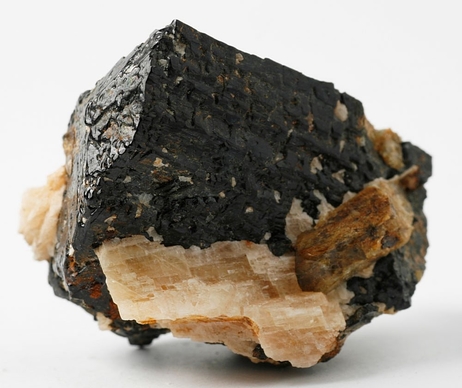








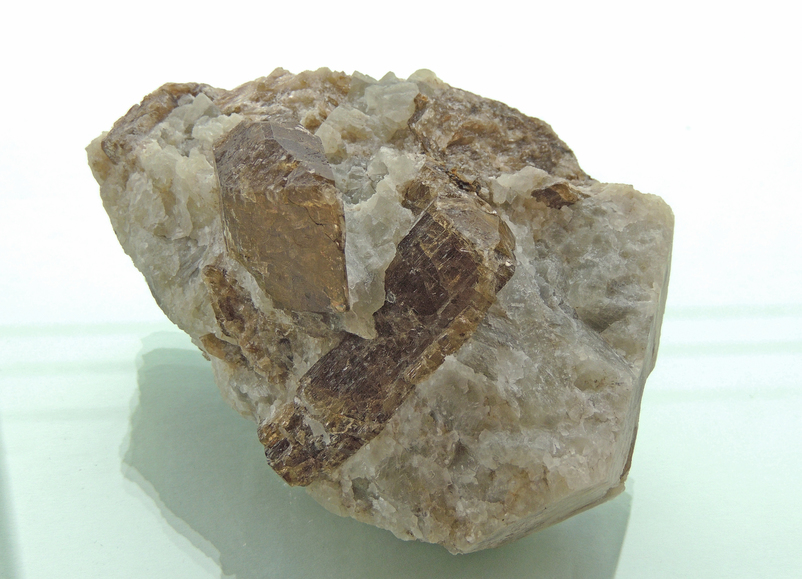

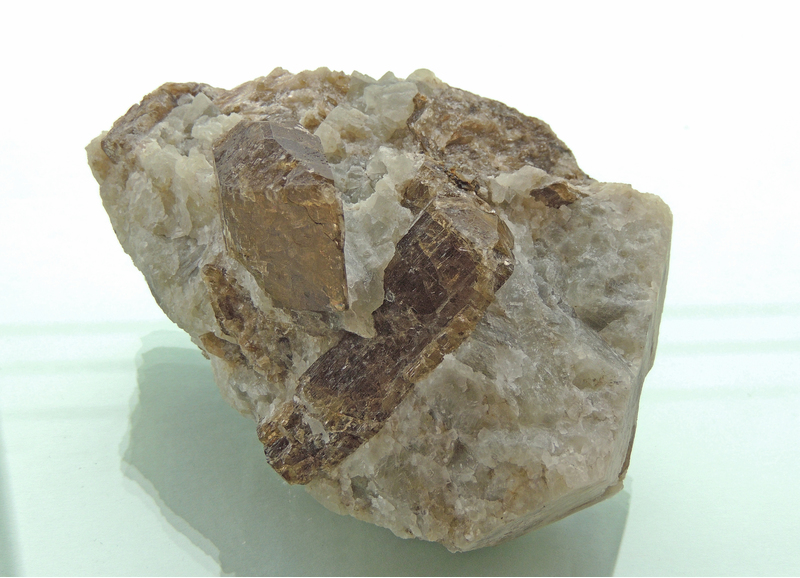
























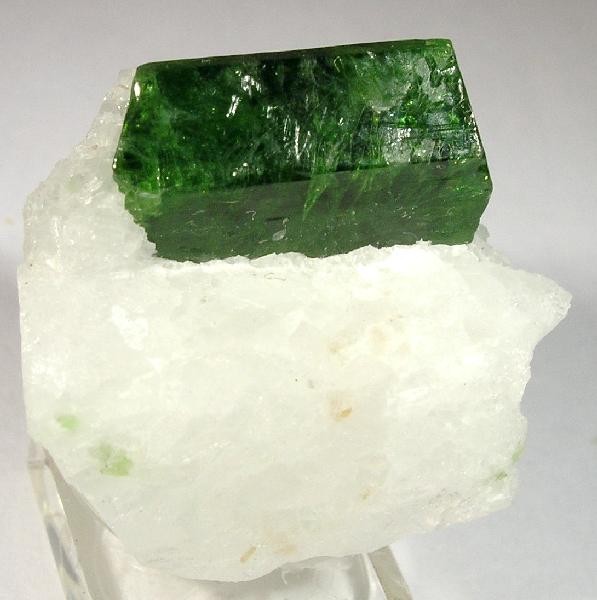














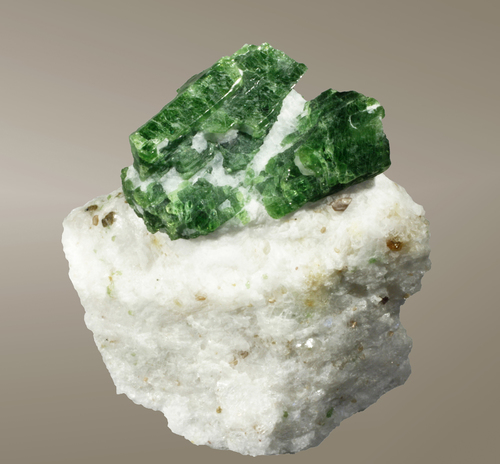










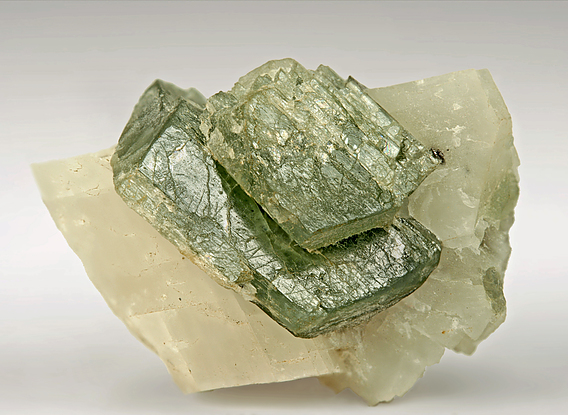
















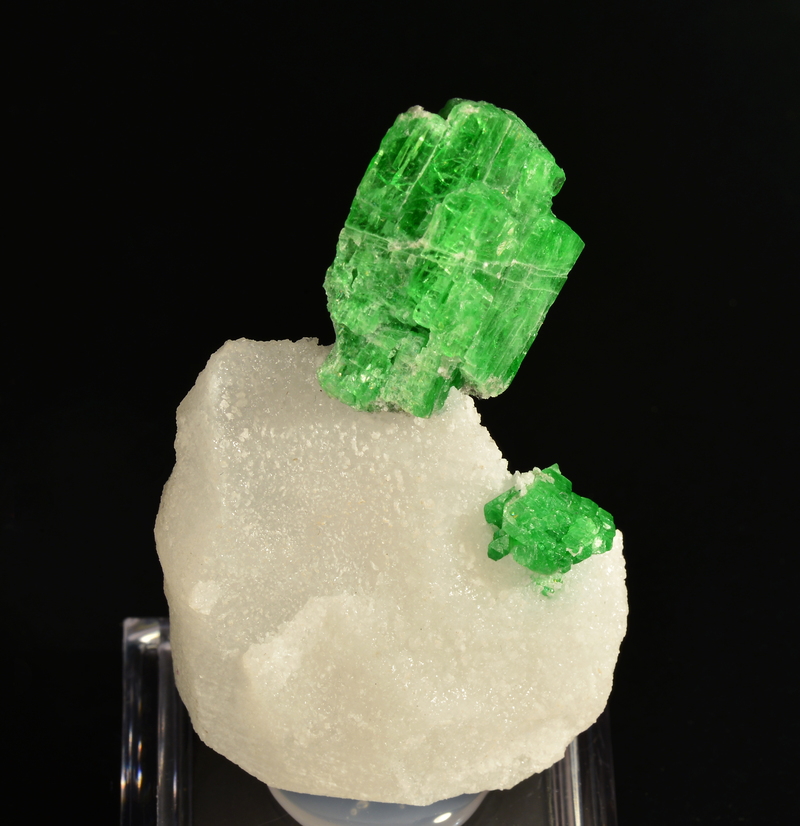

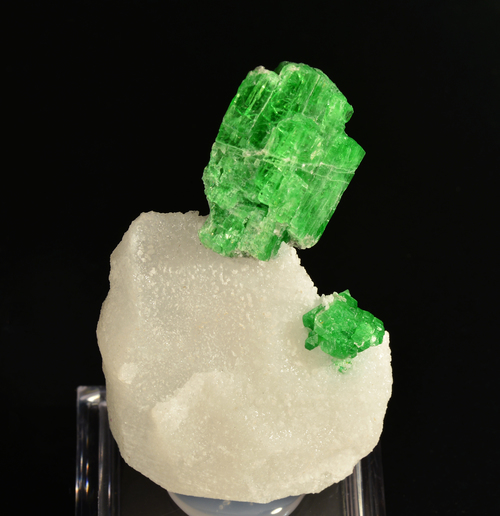














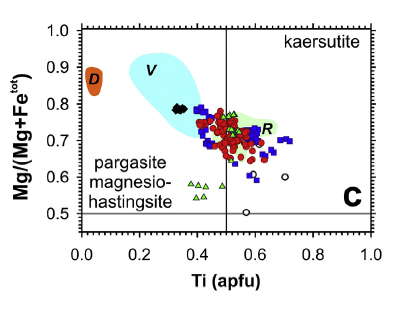




Skräbböle Quarry, Pargas, Southwest Finland, Finland